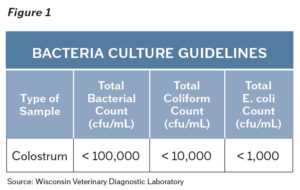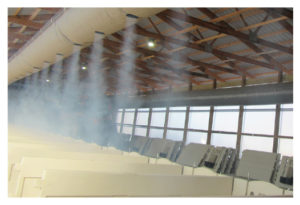Comparing Calves To Bicycle Wheels- A Systematic Approach To Troubleshooting Pre-weaned Calves
Click here to view as a pdf: Comparing Calves To Bicycle Wheels
By Ryan Leiterman, D.V.M and Lorrie Meister, C.V.T.
On October 11, 1826, Theodore Jones of London, England received a patent for what he called “wire wheels”. Jones found that if he added wires, or what we now call spokes, to a circular rim, the wheel could bear greater stress while maintaining its round shape. The addition of the spokes helped the rim distribute the stress evenly throughout the wheel. This strength is dependent on all the spokes working together; if one or more spokes are weak or broken, the rim may collapse.
In the same way that spokes help keep a wheel round, calves have six main “spokes” that help keep them healthy when subject to stress, which are:
-
- Colostrum 4. Air Quality
- Calories 5. Vaccination
- Bedding 6. Sanitation
When evaluating a calf rearing program, think of it like a bicycle wheel. A perfectly round wheel indicates a well-developed and executed calf program. A generally round wheel flexing under some stressors may indicate one or more areas of opportunity within the program. A completely collapsed wheel requires that the entire calf program be assessed to minimize any further calf morbidity and/or mortality. Tests can be run to evaluate the strength of each spoke in the wheel; procedures and protocols can then be instituted to strengthen the weak spokes and ultimately get the wheel round again. Consider these six components when assessing your calf program:
Spoke #1: COLOSTRUM
Evaluate program with Brix refractometer, colostrum cultures, and blood serum total proteins
The quantity and quality of colostrum calves receive at birth influences their entire future, including the volume of milk they produce once they start lactating. Verify colostrum quality by testing colostrum samples with a Brix refractometer. Regardless of the brand or style of the refractometer, choose one that operates in the 0-33 percent Brix range for colostrum evaluation. Test all colostrum prior to feeding and strive to feed heifer calves colostrum that is greater than 23 percent Brix. Feed enough colostrum to deliver a minimum of 200 grams of IgG within 4 hours of birth.
Improper cleaning of the lens/sample well can cause both digital and light refractometers to give an incorrectly high reading. Colostrum is high in fat content which can lead to a film buildup on the refractometer lens if it is not properly cleaned. This film will add to the degree of bend in the light and cause falsely elevated readings. Clean the lens of the refractometer after each use with 70 percent rubbing alcohol to prevent fat buildup and ensure accurate readings.
Validate proper colostrum collection and storage by periodically performing colostrum cultures to evaluate bacteria levels. Proper colostrum collection and storage can limit the growth of harmful bacteria in the calf’s first meal. Consider additional culturing for Salmonella and Mycoplasma if there is a history of issues with these pathogens on your dairy. 
Testing and feeding good quality colostrum is only half the battle. Confirm calves are utilizing the colostrum given and receiving the protection they need from it by routinely testing blood serum total proteins. Monitor your colostrum program with routine weekly or monthly testing of calves that are between 1 and 7 days of age. Colostrum management practices are considered successful if 80 percent of the calves tested are at or over 5.5 g/dL.
Spoke #2: CALORIES
Evaluate program by weighing calves and performing milk cultures
 Weigh calves to determine if the calf feeding program is delivering the necessary calories to allow the calves to reach their full genetic potential. Calves should double their birth weight within the first 60 days of life. Calibrated digital scales are the most accurate way to know true average daily gains and for many farms, they are a practical solution that helps improve awareness of calf nutrition.
Weigh calves to determine if the calf feeding program is delivering the necessary calories to allow the calves to reach their full genetic potential. Calves should double their birth weight within the first 60 days of life. Calibrated digital scales are the most accurate way to know true average daily gains and for many farms, they are a practical solution that helps improve awareness of calf nutrition.
Calf raisers feeding pasteurized whole milk should routinely culture pre- and post-pasteurization samples to ensure the pasteurizer is working properly.
Spoke #3: BEDDING
Evaluate program with Nesting Score/Knee Test
Bedding is needed to keep calves warm, dry and clean. It is widely accepted that pre-weaned calves experience cold stress at temperatures under 50° F. As a result, bedding needs to keep calves clean, dry and warm during extended periods of cold weather. Using bedding that stays lofty will help trap air close to the calf’s body and keep it warm. Chopped straw may be easier to handle but it quickly loses its loft. Long stem straw is considered the gold standard for cold weather bedding. Provide 25 lbs. of long stem straw bedding for every 1,000 lbs. of calf body weight per day. Daily bedding during times of intense cold will help maintain bedding loft and calf warmth.
An assessment of bedding can be made using the University of Wisconsin-School of Veterinary Medicine bedding evaluation tool shown below. This tool is based on the concept that large amounts of lofty dry bedding allow the calf to nestle into the bedding and stay warm. Subsequently, the more the calf can nest into the bedding, the higher the nesting score and the better the bedding. Another simple bedding evaluation test is the “knee test”. Simply kneel down in the bedding of multiple calf pens; if your knees stay clean and dry, the bedding passes the test.
Spoke #4: AIR QUALITY
Evaluate program with smoke bombs and airspeed meter
Check that calves are getting enough fresh air by using a smoke bomb test as a safe and effective way to determine the number of air exchanges a barn is receiving per hour. Current industry recommendations suggest a minimum of four air exchanges per hour during cold weather. To estimate this, light several smoke bombs in the barn and walk around, filling the barn with smoke. Then time how long it takes the barn to clear the smoke in minutes and apply to the equation below.
60 minutes per hour ÷
# of minutes to clear the smoke = # of air exchanges per hour
Verify the fresh air is delivered to the calf level by using the smoke bomb test to visualize airflow. Bringing fresh air into the barn does not necessarily mean it is reaching the calf space. Smoke bombs are cheap, easy to use and can aid in the visualization of airflow. Introduce the smoke into the fresh air inlets or positive pressure tubes and watch how it is distributed throughout the barn. 
It is very important to measure whether the calves are experiencing a draft by using an anemometer (airspeed meter). A draft for a pre-weaned calf is defined as air moving faster than 50 feet per minute or ½ mile per hour. While drafts are to be avoided when it is cold, they are beneficial for heat abatement when it is hot outside. Accurate air speed meters can be relatively expensive. Most ventilation professionals will have access to an anemometer for evaluating airspeeds on-farm.
Spoke #5: VACCINATION
Evaluate program with your veterinarian
Due to regional and operational differences, there is no such thing as a one size fits all vaccination protocol. Therefore, it is best to consult with your veterinarian when designing a vaccine protocol. A judicious yet effective vaccination protocol will limit vaccine use to those that have proven efficacy. Creating a protocol specific to your farm and reviewing vaccine use annually will provide the best protection for all animals involved.
Spoke #6: SANITATION
Evaluate program with ATP meter or surface protein swabs
Just because something looks clean, does not mean it is. Cleaning protocol efficacy can be assessed with an ATP meter or surface protein test. There are countless products and protocols when it comes to keeping calf equipment clean. Regardless of the approach used, an effective cleaning and disinfection protocol should reduce pathogen buildup and remove biofilm from calf feeding equipment and pens. Execute the established cleaning and disinfection protocol, then use an ATP meter or surface protein swab to test what is being left behind. ATP meter readings of 200 RLU or less are the goal for calf feeding equipment and penning after they have been cleaned and disinfected. Document your ATP readings to help identify areas that need improvement or to recognize times of the year that are more challenging to maintain cleanliness. Perform audits of cleaning and disinfecting protocols on a regular basis to keep pathogens at the lowest levels possible.
Focusing on maintaining strong spokes in your calf wheel will keep your calves at optimum performance. Evaluating colostrum, calories, bedding, air quality, sanitation and vaccinations can help calf raisers ensure that calves stay healthy despite the stressors they may encounter.
This article was originally published with the Progressive Dairy Magazine at



